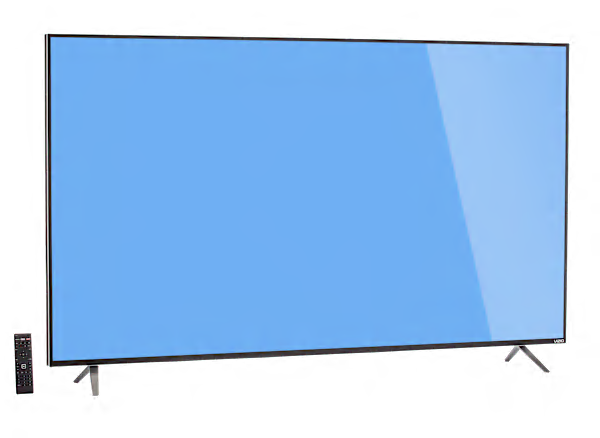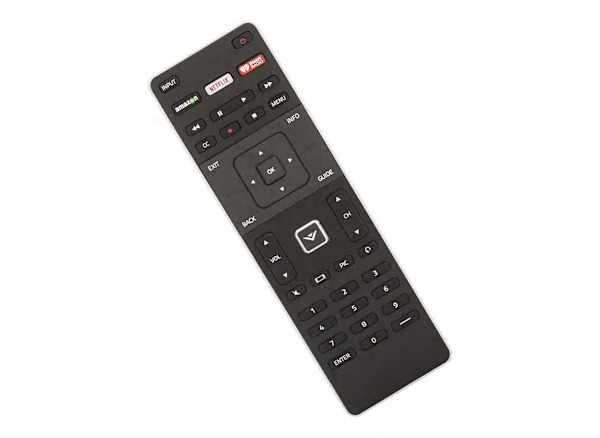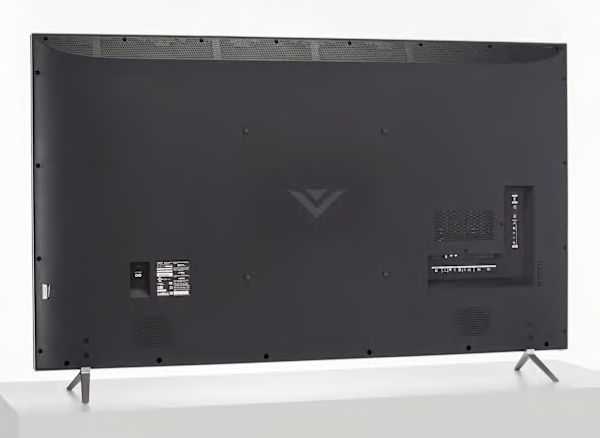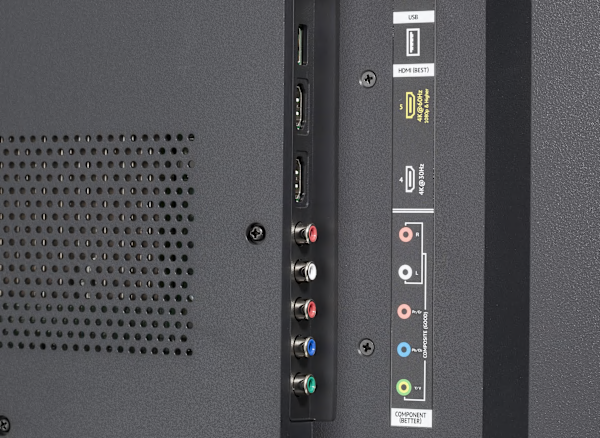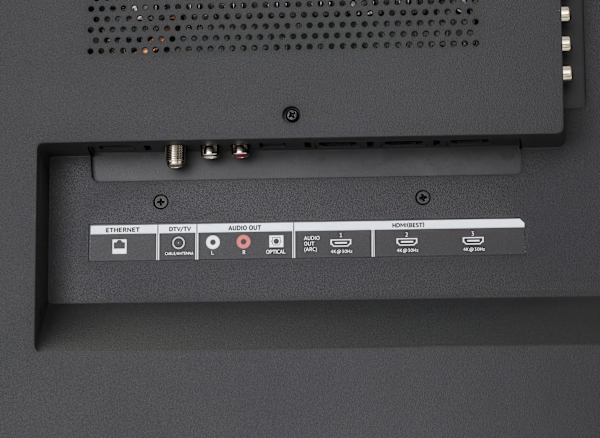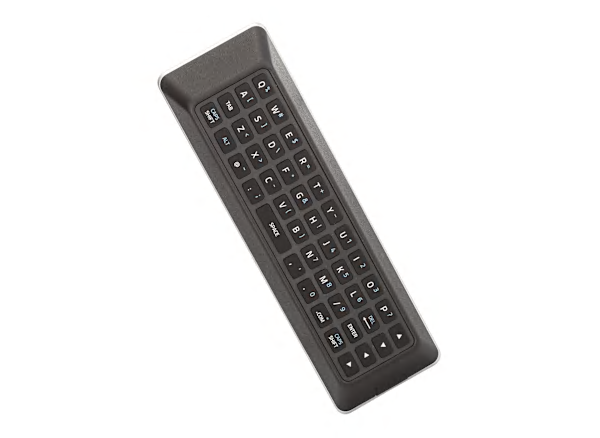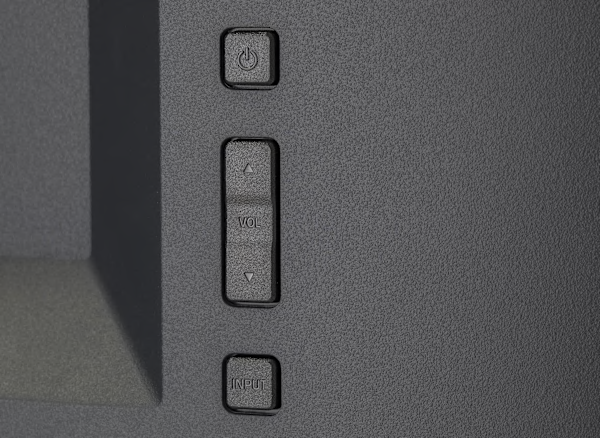PICTURE QUALITY This model had very good high-definition picture quality. It did an excellent job displaying the finest detail. Color accuracy was very good, with images generally looking natural. Contrast--the difference between the darkest blacks and brightest whites--was good, so images had depth and dimension, typical of most models we test. The brightness level was good, making it a suitable choice for most rooms. Black levels are very good delivering fairly deep blacks due to Vizio's very effective "Active LED Zones," a local dimming feature designed to give greater depth and contrast to dark scenes. Any unwanted illumination side effects often introduced by such a feature were minimal so we left the feature on. With the feature off, black levels were quite hazy. Appended note: (see "viewing angle" comments for other limitations on black level quality.) Images had an excellent level of detail without any enhancement. In scenes with subtly shaded light-to-dark areas, such as a sky during sunset, the TV did a very good job producing a smooth transition without distinct, coarse bands. There was a slight uneven brightness effect that created cloudy areas most noticeable on very dark scenes. We routinely see this type of issue with many brands of LCD TVs, regardless of the type of backlight used (CCFL or LED). Though it's generally not a significant problem, it can vary in degree from TV to TV. Film mode operation for HD film-based content was only good with visible jaggies along the edges of objects during motion scenes on movies. Deinterlacing on the other hand had excellent performance with no visible jaggies when converting 1080i video content to the display's native resolution.
VIEWING ANGLE This Vizio has a moderate viewing angle overall, decent, but not quite as good as the better-performing LCD sets we've tested. The optimal seating position for best picture quality is directly in front of the TV. If your family is seated in chairs off to the side of the TV, they'll see decent but compromised image quality.
When we moved off to the sides the horizontal viewing angle was good; the picture showed a moderate loss of color so flesh tones looked washed out, along with a moderate color shift. Black levels brightened significantly, making dark scenes look hazy.
ULTRA HD PERFORMANCE (UPDATE: Since this TV was first tested in our lab Vizio updated its firmware and we no longer see the motion smoothing feature turning on by default (described below) on newer M-series Vizio TVs we're testing. We assume that with the update installed this TV should no longer have this problem). This Vizio UHD TV delivers very good 4K picture detail, along with very good HD-to-UHD upconversion, but flawed processing has the TV defaulting to a motion smoothing mode. All native 4K content we played on this model, including movies and test videos from our Sony FMPX10 player, was presented in 4K detail when played back via the TV's HDMI input. We did note some reduction of fine detail such as on skin texture when compared to our 4K reference TV, possibly due to some noise reduction processing, but this was quite subtle and shouldn't be a concern. More significantly, the TV's motion smoothing feature, an effect we normally turn off, defaults to active, when switching between the TV's inputs, or just turning the TV off, then back on. This model also supports video streaming of 4K programs via both Netflix and YouTube (among other emerging sources), and again image detail was generally fine but texture was slightly compromised as noted previously. There was no obvious image-sharpening worth noting, but the motion smoothing effect continued to be an issue with streaming as well. Using the TV's USB port, we were able to play back 4K videos stored on a flash drive which were encoded in the HEVC format, but could not play our MP4 or VP9 test files. With photo playback, high-resolution images were unfortunately downscaled to lower 1080p resolution, not taking advantage of the display's detail potential. With regular HD content, the TV's HD-to-UHD upconversion processing was very good, with edges along diagonals of image content showing very slight jaggies, just short of the best we've seen. Three of the TV's five HDMI inputs comply with the latest HDCP 2.2 copy protection specification, and only one of those three is HDMI 2.0 compatible and able to support play back of 4K video at 60Hz. These specifications are required for compatibility with emerging 4K movie play back devices such as a 4K Blu-ray player.
MOTION BLUR This Vizio TV has good motion performance, with some blurring on our motion tests. Though this model includes Reduce Motion Blur, a feature designed to reduce motion blur, we found it was only mildly effective.
SCREEN REFLECTIVITY Though not as mirror-like as on some LCDs, this screen surface is glossy and therefore susceptible to reflections from a nearby lamp or window. The screen is dark so it does a good job reducing glare from ambient light and maintains contrast even in a bright room.
SOUND QUALITY This TV has fair sound quality with below average performance. It's acceptable for typical programming, but shortcomings become obvious with movie soundtracks and music. With movies, dialog was generally clear and natural sounding, though a bit muffled and thin, while remaining well balanced with respect to background music and other sounds. Base extension was lacking and treble lacked detail, with the overall sound a bit thin and somewhat closed in. It has a good volume range so the TV should play sufficiently loud in typical room environments. If sound quality matters to you, you might want to add a soundbar or other external speaker system to this set.
EASE OF USE Overall, we found the set was easy to use for the most part. Setting up the TV for the first time was very easy, as was access to features and controls you'll probably adjust only once. Ease of access to features you typically use more often was good. Also, the remote is satisfactory, and the on-screen menu is easy to navigate.
It lacks a dedicated menu button on the television display, so you can't access the menu if you lose the remote. The full QWERTY keyboard on the remote makes it easier to enter text data.
STAND ASSEMBLY Mounting the support feet to the TV is straightforward. The TV rests on four feet with each pair located at the far ends of the display, which means the table top you'll be setting the TV on will need to be at least as wide as the display itself.
INTERNET FEATURES This TV provides advanced Internet capability. Features include access to a library of applications via "Yahoo Smart TV App Store
CONNECTIONS This TV includes five HDMI inputs, one shared connection between the component and composite inputs (which means you can only use one type or the other at a time), optical digital audio out, one USB port, an Ethernet port, and Wi-Fi. Wireless connectivity includes: DLNA network file sharing. The cable connections on the rear panel are recessed with side or bottom-facing ports, so wires don't protrude beyond the display's depth.
INCLUDED IN THE BOX The TV comes with: an electronic user manual accessible via the TV's menu (no printed manual is included), a quick start guide, and a remote with batteries. ABOUT FIRMWARE VERSION: Our test results and picture settings are valid for the version of firmware indicated. If your TV's firmware differs from the one shown you either have an older or a newer version of firmware. Manufacturers may periodically upgrade the TV's firmware to enhance operation, fix bugs, or add features. Firmware upgrades may be downloadable directly to your TV via a wired or wireless network (if internet capable), USB port, or memory card, depending on your TV's capability. You can check your TV's firmware version, or upgrade to the latest firmware by pressing the menu button on your remote and navigating to the appropriate submenu, typically under settings. Consult the user manual or manufacturer's website if further guidance is needed.

















